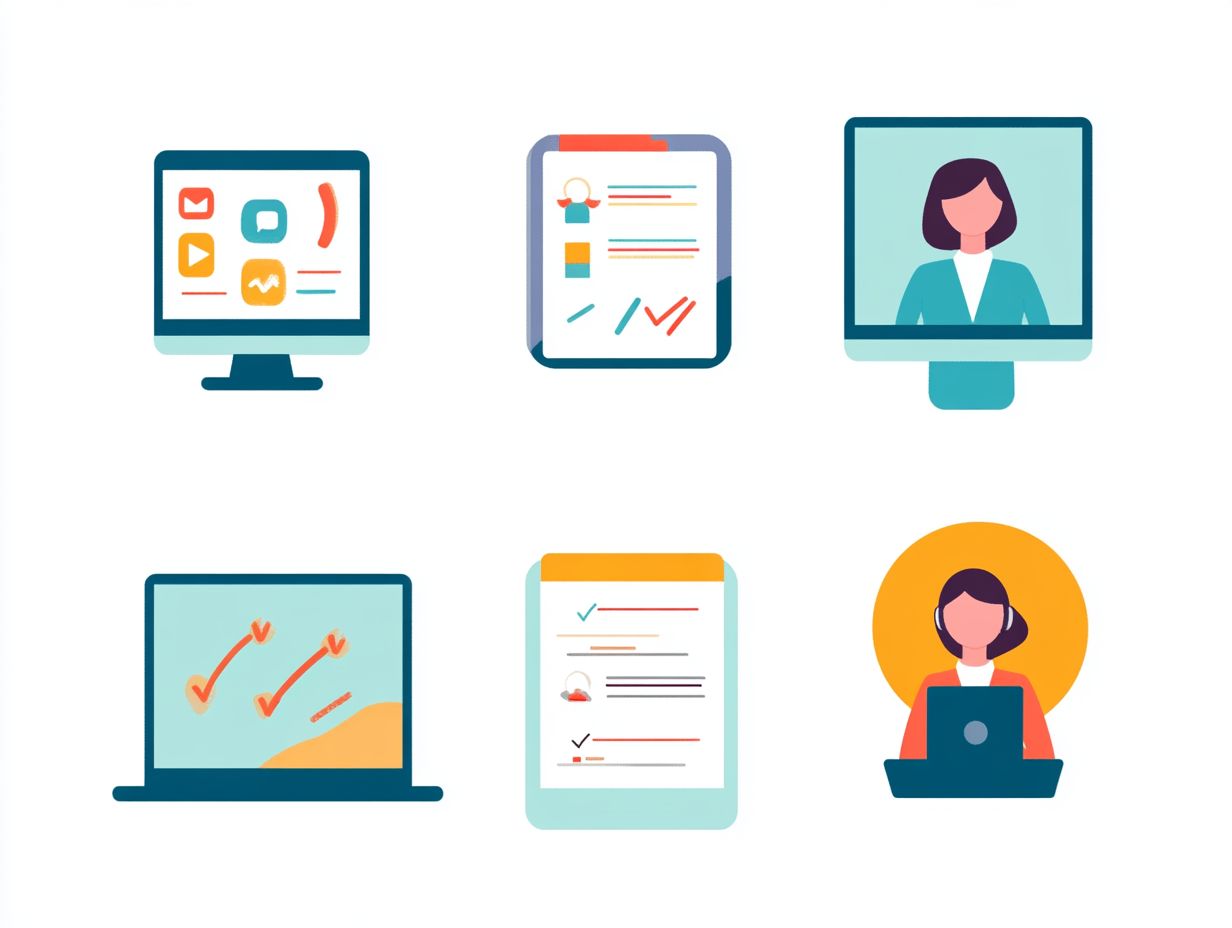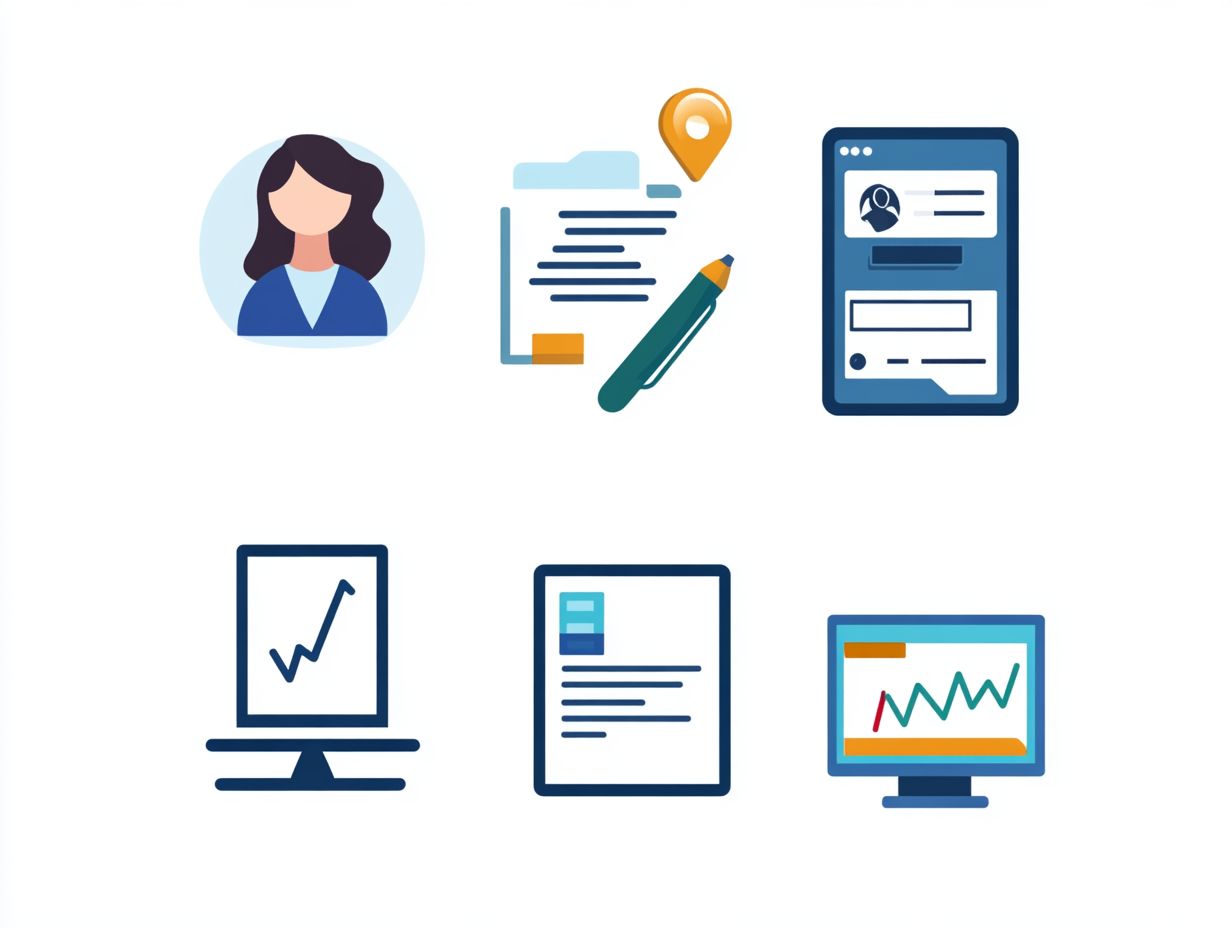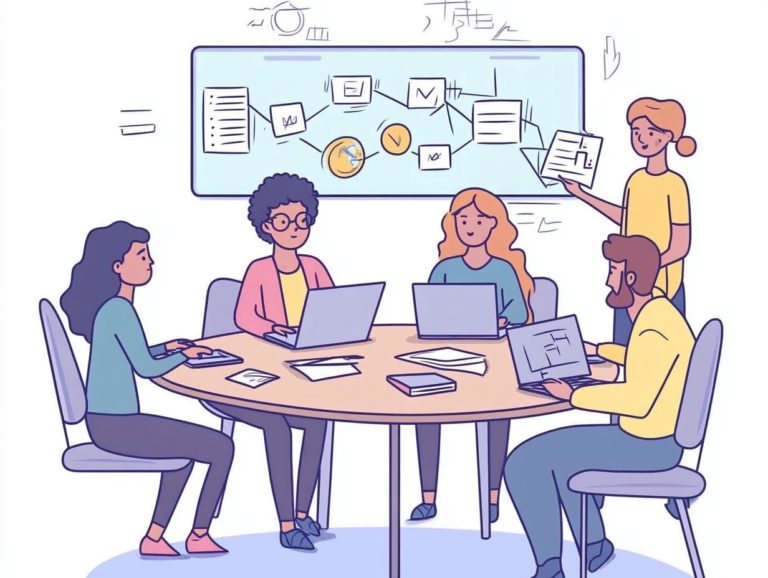5 Most Effective E-Learning Assessment Types
In today’s digital learning landscape, mastering the art of knowledge assessment is essential for both educators and learners alike. This article delves into five effective e-learning assessment types: quizzes, assignments, discussions, peer reviews, and interactive simulations.
You will also uncover the benefits of these assessments, learn how to customize them for various learning styles, explore best practices for implementation, and identify potential challenges that may surface.
Discover how these strategies can significantly enhance knowledge retention and foster continuous improvement within e-learning environments.
Contents
- Key Takeaways:
- 1. Quizzes and Tests
- 2. Assignments and Projects
- 3. Discussions and Forums
- 4. Peer Reviews and Feedback
- 5. Interactive Simulations and Games
- What Are the Benefits of Using E-Learning Assessments?
- How Can E-Learning Assessments Be Customized for Different Learning Styles?
- What Are the Best Practices for Creating Effective E-Learning Assessments?
- How Can E-Learning Assessments Help with Retention and Application of Knowledge?
- What Are the Common Challenges in Implementing E-Learning Assessments?
- How Can E-Learning Assessments Be Used for Continuous Improvement?
- Frequently Asked Questions
- What are the 5 most effective e-learning assessment types?
- How do multiple choice assessments help e-learning?
- What makes short answer assessments effective for e-learning?
- Why are case study assessments important in e-learning?
- How do simulations enhance e-learning assessments?
- What is the role of peer assessment in e-learning?
Key Takeaways:

- Quizzes and tests help measure understanding and retention of knowledge.
- Assignments and projects foster critical thinking and practical application of concepts.
- Peer reviews and feedback promote collaborative learning and diverse perspectives.
1. Quizzes and Tests
Quizzes and tests are important parts of eLearning assessments. They serve as powerful tools to evaluate your performance and gauge your understanding of key learning objectives.
Whether through formative assessments that provide ongoing feedback or summative assessments that measure knowledge retention at the course’s conclusion, these evaluations are vital for your educational journey.
In the world of online learning, various types of quizzes and tests significantly shape your experience. Engaging and interactive online quizzes offer immediate feedback, enabling you to pinpoint your strengths and weaknesses in real-time.
Formative assessments, like quick polls and short answer quizzes, encourage continuous learning. They allow you to track your understanding as the course progresses.
On the flip side, summative assessments, such as final exams that cover everything or projects, help you synthesize the knowledge you ve acquired, measuring your overall mastery of the subject matter.
Together, these tools create a well-rounded evaluation strategy that not only enhances your learning outcomes but also fosters a deeper connection with the material.
2. Assignments and Projects
Assignments and projects in eLearning offer valuable opportunities to test your knowledge and skills in real-world scenarios. Whether it’s tackling essay questions or engaging in comprehensive projects, these tasks align with adaptive learning paths tailored learning journeys based on your needs guided by sound instructional design principles.
These assignments reinforce core learning objectives and also spark your creativity while developing critical thinking skills.
For example, a group project might require you to engage in collaborative research or craft a multimedia presentation, while individual assignments can involve reflective journals or quizzes tailored to your specific skill level.
To elevate your learning experience, educators can leverage a variety of tools and platforms, like Google Classroom or Edmodo, which streamline the processes of assignment creation, distribution, and submission. By jumping on these resources right away, instructors can effortlessly track your progress and adjust the learning experience to better suit your unique educational journey.
3. Discussions and Forums
Discussions and forums are essential components of eLearning that elevate student engagement and foster collaboration. They give you an exciting space to share your thoughts, ask questions, and offer feedback through structured posts, ultimately enhancing your learning experience.
These platforms create a rich tapestry for knowledge exchange, allowing you to articulate your thoughts and challenge your understanding through meaningful interactions with your peers.
In this dynamic environment, instructors play a pivotal role; they can facilitate discussions by implementing effective feedback mechanisms that encourage thoughtful responses and critical thinking.
By employing moderation strategies, instructors ensure that conversations remain constructive and inclusive. This collaborative learning environment allows you to take charge of your educational journey.
4. Peer Reviews and Feedback

Peer reviews and feedback play a crucial role in your eLearning journey. They encourage you to critically assess your peers’ work and provide constructive insights.
By leveraging assessment data, you can enhance your skills and understanding of the subject in instructional design. This collaborative approach builds a community.
It also helps you develop important skills that are valuable in school and work. Participating in peer evaluations sharpens your critical thinking abilities and enables you to tackle problems from different angles.
Effective peer review requires specific strategies for delivering feedback. The sandwich technique presents positives before addressing areas for improvement.
Various tools, like Google Docs for collaborative commenting, and platforms such as Peergrade or Edmodo streamline peer reviews in eLearning environments. This ensures that the feedback you receive remains constructive and actionable.
5. Interactive Simulations and Games
Interactive simulations and games in eLearning assessments immerse you in experiences that significantly enhance your understanding and retention.
These tools, like dialogue simulations and game-style activities, elevate your performance and promote a truly interactive learning environment.
They also capture your attention and align perfectly with educational goals by offering real-time feedback and assessment opportunities.
For instance, platforms such as Kahoot! and Quizlet invite you to join gamified quizzes that spark healthy competition while reinforcing the course material.
Simulation tools like Labster allow you to conduct virtual experiments. This effectively bridges the gap between theory and practical application.
By embracing these engaging methods, educators can create an environment that captivates you and provides invaluable insights into your progress and understanding.
What Are the Benefits of Using E-Learning Assessments?
Utilizing eLearning assessments brings many advantages. You gain personalized feedback mechanisms that address your unique learning needs.
You’ll notice improved student performance through formative and summative assessments. The flexibility of various tools in online learning environments is also a key benefit.
These assessments enhance your learning experience and help develop vital skills like critical thinking and self-regulation.
For example, adaptive quizzes can adjust their difficulty based on your performance, keeping you engaged and appropriately challenged.
Recent studies indicate that students participating in eLearning assessments achieve a retention rate up to 20% higher than those using traditional methods.
Plus, accessing assessments from anywhere allows diverse learners including those with disabilities or varying schedules to showcase their knowledge effectively. This leads to more equitable learning outcomes.
How Can E-Learning Assessments Be Customized for Different Learning Styles?
E-learning assessments can be tailored to suit your unique learning style by using adaptive learning paths that align with your preferences.
By utilizing a diverse range of assessment tools and interactive experiences, these methods engage various learners effectively.
If you re a visual learner, you ll thrive with graphical content. Interactive quizzes featuring diagrams or infographics can simplify complex concepts for you.
If auditory learning is more your speed, assessments with narrated instructions or audio prompts can significantly boost your engagement.
If you lean toward kinesthetic learning, hands-on activities, such as simulations or project-based assessments, let you apply your knowledge practically.
By acknowledging these preferences, e-learning environments can build a more inclusive and effective assessment strategy, ultimately leading to better outcomes for you and all students alike.
What Are the Best Practices for Creating Effective E-Learning Assessments?

Best practices for crafting effective eLearning assessments involve a thoughtful blend of strategies. From applying sound instructional design principles to leveraging assessment data, these practices enhance the overall learning experience.
When you prioritize clarity in learning objectives, you offer learners a clear roadmap of expectations. This makes assessments valuable milestones in their journey.
Embracing a mix of assessment methods such as quizzes, projects, or peer reviews caters to various learning styles and keeps engagement levels high.
Timely feedback is crucial. It helps learners spot their strengths and pinpoint areas for improvement, nurturing a more responsive and adaptive learning environment.
By integrating these elements, you can significantly elevate the effectiveness of eLearning assessments, ultimately leading to improved learning outcomes.
How Can E-Learning Assessments Help with Retention and Application of Knowledge?
E-learning assessments play a pivotal role in enhancing your retention and application of knowledge. Using tools like formative assessments helps you receive ongoing feedback that ensures you can effectively grasp and apply concepts over time.
Incorporating a variety of assessment techniques like quizzes, reflective journals, and peer evaluations creates multiple opportunities for you to engage and reflect on your learning. This diverse approach reinforces your understanding and helps you identify areas for improvement.
Timely and constructive feedback is essential. It guides you on your learning journey and fosters a deeper connection to the material. When you receive personalized insights, your motivation to adjust your strategies increases, leading to enhanced learning outcomes and greater confidence in applying what you’ve learned in real-world situations.
What Are the Common Challenges in Implementing E-Learning Assessments?
Common challenges you face in implementing eLearning assessments include accurately capturing assessment data, ensuring fair evaluation of student performance, and creating effective feedback mechanisms that resonate with diverse learner needs.
These obstacles can significantly affect the reliability of your assessments and the overall learning experience for students. For instance, you may encounter technology limitations that hinder your ability to utilize certain assessment tools effectively.
To overcome these challenges, it s crucial to adopt varied methods. This could involve providing comprehensive training for instructors on innovative assessment technologies, incorporating a variety of assessment formats to cater to different learning styles, and establishing clear communication channels to clarify objectives and expectations.
Utilizing data analytics can offer valuable insights into student performance, highlighting areas that require improvement and fostering a more inclusive and effective eLearning environment.
How Can E-Learning Assessments Be Used for Continuous Improvement?
E-Learning assessments act as powerful instruments for your continuous improvement. By leveraging assessment data, you can refine instructional design and enhance learning experiences, cultivating a cycle of ongoing feedback that benefits both you and your learners.
When you analyze this data, you can identify trends in student performance and tailor interventions accordingly. For example, feedback mechanisms such as surveys or self-assessments allow learners to share their perceptions of course effectiveness and content clarity.
Once you receive this valuable information, you can make targeted adjustments like incorporating multimedia resources or adjusting pacing to better engage your students.
Adaptive learning technologies can use assessment data to personalize learning paths, ensuring that each learner receives the support necessary for success. This approach can dramatically enhance outcomes and greater satisfaction for everyone involved.
Frequently Asked Questions

What are the 5 most effective e-learning assessment types?
The 5 most effective e-learning assessment types are multiple choice, short answer, case study, simulation, and peer assessment.
How do multiple choice assessments help e-learning?
Multiple choice assessments provide immediate feedback. They are also scalable and can cover a wide range of content areas.
What makes short answer assessments effective for e-learning?
Short answer assessments require critical thinking. They assess both knowledge and application of concepts.
Why are case study assessments important in e-learning?
Case study assessments allow learners to apply their knowledge to real-world scenarios. This encourages problem-solving skills and critical thinking.
How do simulations enhance e-learning assessments?
Simulations create immersive and interactive learning experiences. Imagine diving into a realistic scenario and practicing your skills!
What is the role of peer assessment in e-learning?
Peer assessment occurs when students review each other’s work. This promotes collaboration and enhances understanding through teaching and evaluating others.
Don’t miss out on the chance to enhance learning with engaging simulations! Each assessment type plays a vital role in developing effective e-learning experiences.






